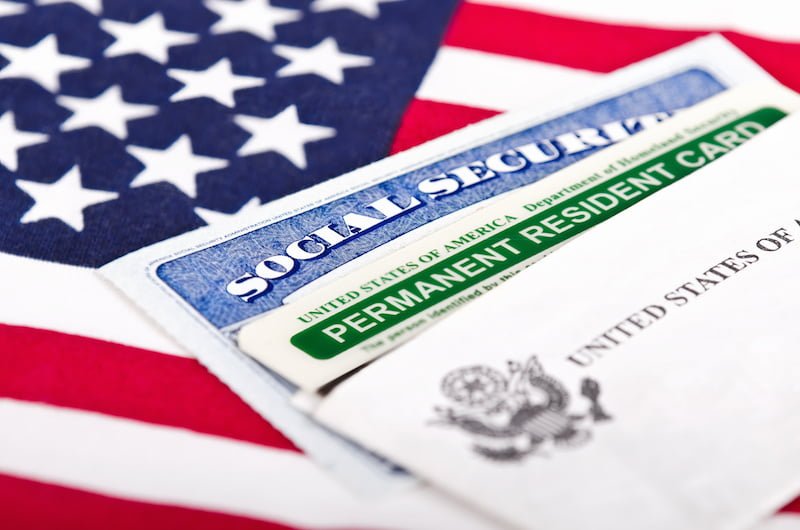Applying for an EB-5 investor visa is one way to become a U.S. permanent resident.
However, as with any immigration method, you must follow the process determined by the United States Citizenship and Immigration Services (USCIS).
Making a mistake during that process can cost you time and money, and could even mean losing your shot at permanent residency.
In this article, we’ll explain the EB-5 immigration process step by step. However, no article is a substitute for good legal counsel.
By working closely with an experienced immigration attorney, you can insure that your visa application is filed correctly.
This will increase your chances of receiving a probationary EB-5, followed by full permanent residency down the line.
Editor’s Note: The EB-5 is currently undergoing some turbulence due to litigation and discussion over the minimum investment amounts and the expiration of the EB-5 regional center program. Please consult with an attorney immediately to get the current facts about the EB-5 program, as this article may not be up to date due to the inherently volatile nature of the program over the past few months. Thank you!
Step 1: Review the Requirements

To qualify for an EB-5 visa, you’ll need to meet several requirements:
- Make a $500,000-$1,000,000 investment in a U.S.-based financial venture.
- Submit a business plan for your investment to create at least 10 permanent, full-time jobs.
- Verify the legitimacy and eligibility of the funds you used for the investment.
- Actively manage your investment venture during your probationary visa.
In addition, you’ll need to pass a sequence of background checks concerning your criminal, health, and financial history. USCIS will perform these checks when you submit your initial I-526 petition.
Once you’ve fulfilled all of these requirements and have submitted the correct paperwork, USCIS will grant you a probationary visa.
They’ll also grant visas to your spouse, as well as any children you have under the age of 21.
After two years of holding the probationary visa, you will be eligible to apply for unconditional permanent residency.
Step 2: Talk to your Lawyer

Before you do anything else, get in touch with a lawyer. When it comes to EB-5 applications, there’s a tremendous amount of money at stake.
Since the cost to hire a good immigration lawyer is comparatively small, there’s no sense in risking your investment by going into an EB-5 application without legal advice.
Make sure you discuss every possible option with your attorney. The EB-5 investor visa is a great option, but it can have downsides that aren’t immediately obvious.
For example, EB-5 application processing times vary greatly by country.
Applicants from countries with a high volume of EB-5 applicants, such as China, could end up waiting years for their application to be processed.
An experienced immigration lawyer can warn you about pitfalls like these, and help you find out which other options are available.
Step 3: Making an Investment

The first step in applying for an EB-5 visa is to invest in a qualifying business or other project.
The minimum amount you’ll need to invest will depend on the geographical location of your venture.
In most cases, you’ll need to invest at least $1,000,000, but in Targeted Employment Areas (TEAs), the minimum drops to $500,000.
There are two ways to go about making this investment.
- The first is to work with an EB-5 Regional Center, which will work with USCIS to connect you to a qualifying investment opportunity. This option is generally regarded as safer, and the vast majority of EB-5 applicants choose it.
- The second option is to invest directly in a venture of your choice.
Investing with an EB-5 Regional Center
In most cases, EB-5 applicants should strongly consider investing with an EB-5 Regional Center. There are a few reasons for this:
- By applying with a regional center, you’ll be able to take advantage of indirect job creation. This makes the job creation requirement significantly easier to fill.
- Most Regional Centers employ a limited partner model that makes it easier to fulfill the active management requirement.
- Investing with a Regional Center is generally seen as a safer option financially. That’s because Regional Centers use USCIS-approved economic models to identify investment opportunities. In addition, Regional Centers can use pooled capital to keep individual projects afloat. The result is an investment that will very likely fulfill the requirements of an EB-5 visa at a low cost.
That being said, it’s important to perform your due diligence before making any kind of investment.
You should consult with an independent investment advisor before making the decision to invest in a Regional Center.
Investing in a Venture Directly
Your other option is to find and directly invest in a U.S.-based financial venture. This might be a new company that you create, or it might be a branch of larger enterprise.
Any business that employs individuals on a permanent basis can be a valid choice for investment when it comes to qualifying for an EB-5 visa.
The main difference between investing with an EB-5 Regional Center and investing directly in your own enterprise is a matter of responsibility.
With direct investment, you are wholly responsible for the success of your business, as well as any profits you make.
This means that the potential profit margins on a direct investment tend to be much higher, but so is the risk of failure.
As with any investment, greater risks equal greater rewards.
In general, direct investment is a good option if you want to manage your own business and can potentially take a financial loss.
Those seeking a more secure investment or a less intensive management experience will be better off investing with a Regional Center.
Step 4: Filing an I-526 Petition

Once you’ve set your investment in motion, it’s time to file an I-526 petition.
This is a form showing the USCIS that you are in the process of making an investment that will qualify for an EB-5 visa.
It should also show that you acquired your investment funds from a lawful source that meets USCIS’s standards.
Finally, you’ll need to include the $1,500 application fee.
If USCIS accepts your I-526 petition, you should hear back from them within 12 to 18 months.
However, as mentioned above, investors from high-volume regions may have to wait longer.
If your application is rejected, most Regional Centers will refund your investment.
Validity of Funds
Your I-526 petition will have to show that your funds have a lawful, traceable source.
Funds from salaries, stock market profits, sales, or gifts are all valid, provided you have documented them thoroughly.
In most cases, this will mean providing two or more years of bank statements, pay stubs, and other records.
You may also take out loans to cover the cost of your initial investment.
However, the loan must be secured with your own personal assets. Loans secured by a larger company, for example, cannot be listed on an I-526 petition.
In addition, you cannot use the business in which you are investing as collateral.
Meeting the Job Creation Requirement
To satisfy the USCIS's requirements, you’ll need to show that your business will employ ten or more full-time workers on a permanent basis.
To do this, you’ll need a comprehensive business plan, as defined by USCIS.
Your attorney can work with you to prepare this business plan.
The most important factor in your business plan will be to show that you can meet this EB-5 employment requirement as quickly as possible.
Regional centers frequently work with economists who may also demonstrate, using data from the business plan, how the regional center will generate both direct and indirect jobs.
The job requirement will be slightly different if you invest in a “troubled business.”
The USCIS defines a troubled business as one that has experienced a net loss in profit of 20% or more over the past two years.
If you are investing in a troubled business with ten or more full-time employees, USCIS only requires that you maintain your current rate of employment.
Meeting the Active Management Requirement
Finally, your I-526 petition will need to show that you can and will actively manage your enterprise.
This means submitting corporate documents relating to your position, as well as a description of your powers and responsibilities.
Keep in mind that you can still delegate the day to day management of your enterprise.
You only need to demonstrate that you are actively involved in the creation and implementation of corporate policy.
This means that, in most cases, a limited partner position via a Regional Center related project is sufficient to fulfill the active management requirement.
Step 5: Obtaining a Probationary Visa

After USCIS approves your I-526 petition, its time to file for conditional permanent residency. To do this, you’ll file one of two forms:
- Form I-485 - If you already present in the United States, you’ll need to file USCIS’s form I-485. Using form-I485, you can change, or adjust, your status to conditional permanent resident.
- Form DS-260 - If you are not already present in the United States, you’ll have to file the online DS-260 form with the National Visa Center.
Once USCIS approves your paperwork, they’ll grant you a probationary visa.
To keep this conditional visa, you’ll need to continually fulfill the EB-5 requirements above.
You’ll also need to fulfill a physical presence requirement, meaning that you must spend the majority of your time in the United States.
However, your spouse and children may remain within your country of origin without losing their visas.
Step 6: Filing for Permanent Residency

630 days after attaining your probationary visa, it’s time to file for permanent residency again, but this time without conditions.
To do this, you’ll submit an I-829 petition, as well as the $3,750 filing fee.
The average processing is six months, so it’s important to file the I-829 petition as soon as you can.
The I-829 petition is very similar to the I-526 petition, mentioned earlier.
Its purpose is simply to show that you have kept up all of the EB-5 investor requirements, and that you have created new jobs by following your initial business plan.
In addition, you will have to make an appointment with the USCIS to collect biometric data, such as fingerprints, a signature and a photograph.
The USCIS will also run a more thorough criminal history.
Once they accept your I-829 petition, USCIS will reclassify you, your spouse, and your children as non-conditional permanent residents.
At this point, you no longer need to keep up your original investment.
Your green card will be valid for ten years, after which you can renew it online using USCIS form I-90. You can also use form I-90 to replace a green card that is lost or stolen.
Step 7: Apply for U.S. Citizenship (Optional)

After you have lived in the United States for five years, you may choose to apply for U.S. citizenship. To do this, you must have spent at least half of your time as a permanent resident within the United States.
Finally, note that you can only apply for citizenship in a state in which you have lived for three or more months.
The path to U.S. citizenship is complex and has several different steps. The good news is that by the time you get to this step, you’ll have already done most of the work.
Unlike the earlier steps of the process, your immediate family will not automatically benefit from your citizenship. They will have to file for naturalization separately.
Similarly, the physical presence requirement for naturalization applies to each individual separately.
There are many advantages to U.S. citizenship.
In particular, it is much easier for the families of U.S. citizens to immigrate to the United States, compared to the families of permanent residents.
Additionally, if you choose to have additional children outside the United States, those children will be born U.S. citizens.
Conclusion
The EB-5 visa program offers a relatively quick path to permanent residency and, eventually, U.S. citizenship. However, it also requires a lot of paperwork and documentation.
That’s why it’s so important to have an experienced immigration lawyer to help you throughout the process.
By choosing the right legal counsel, you’ll avoid missteps along the road to an EB-5 visa, and save yourself time and money.

